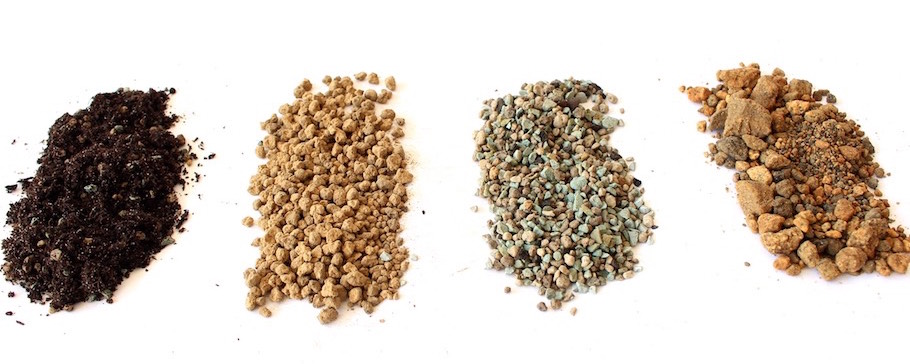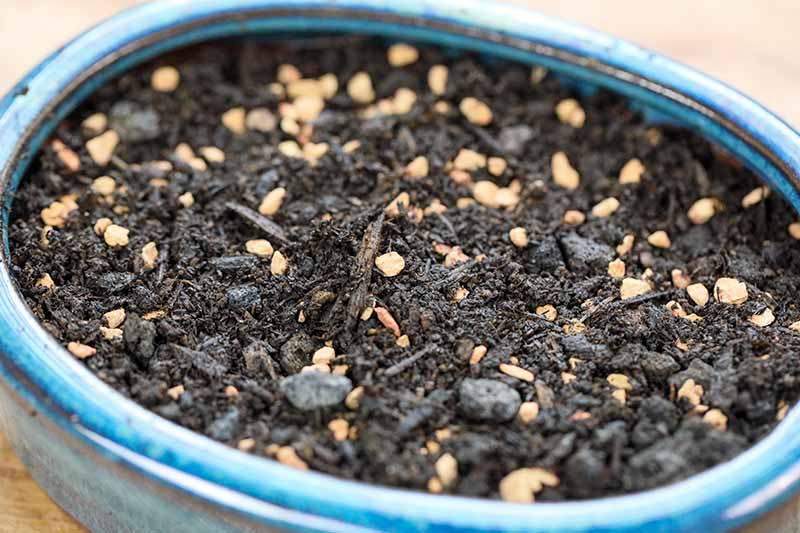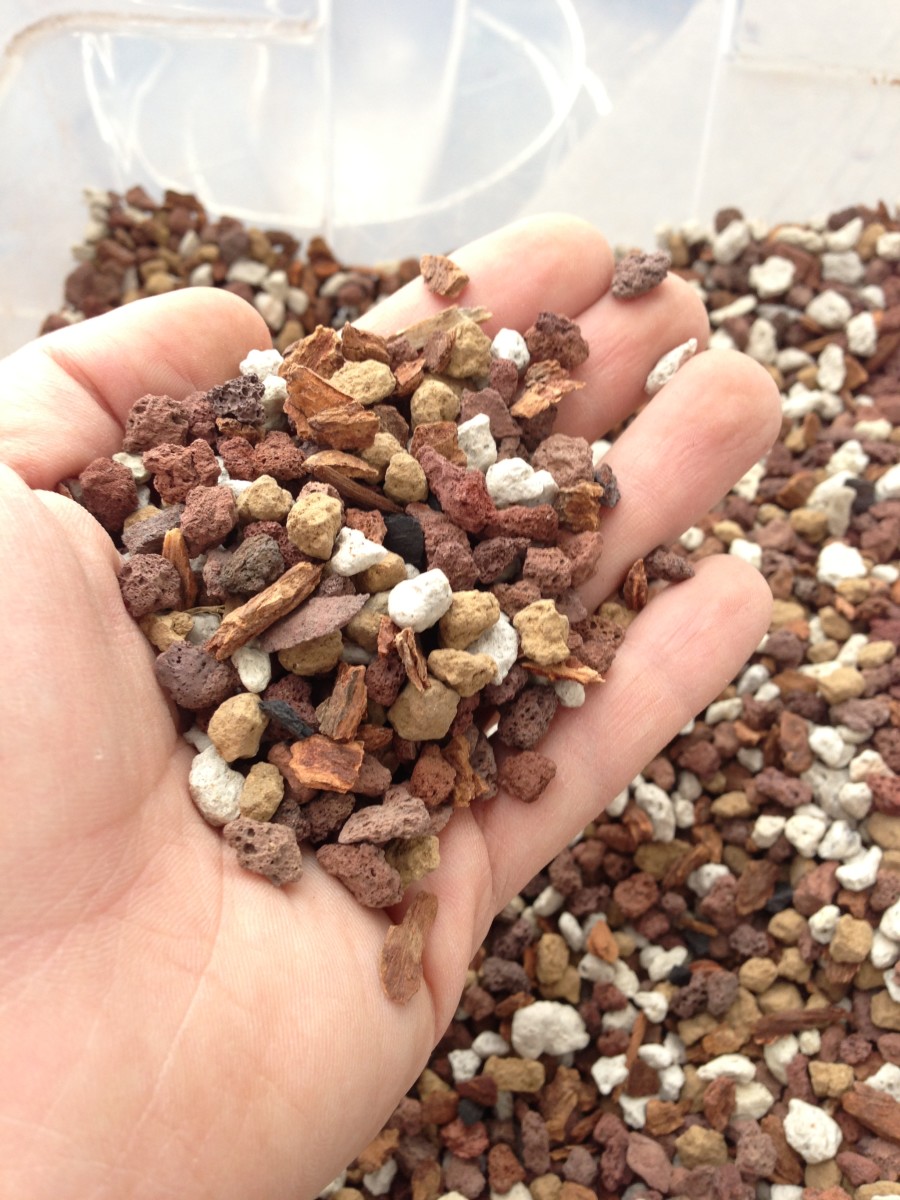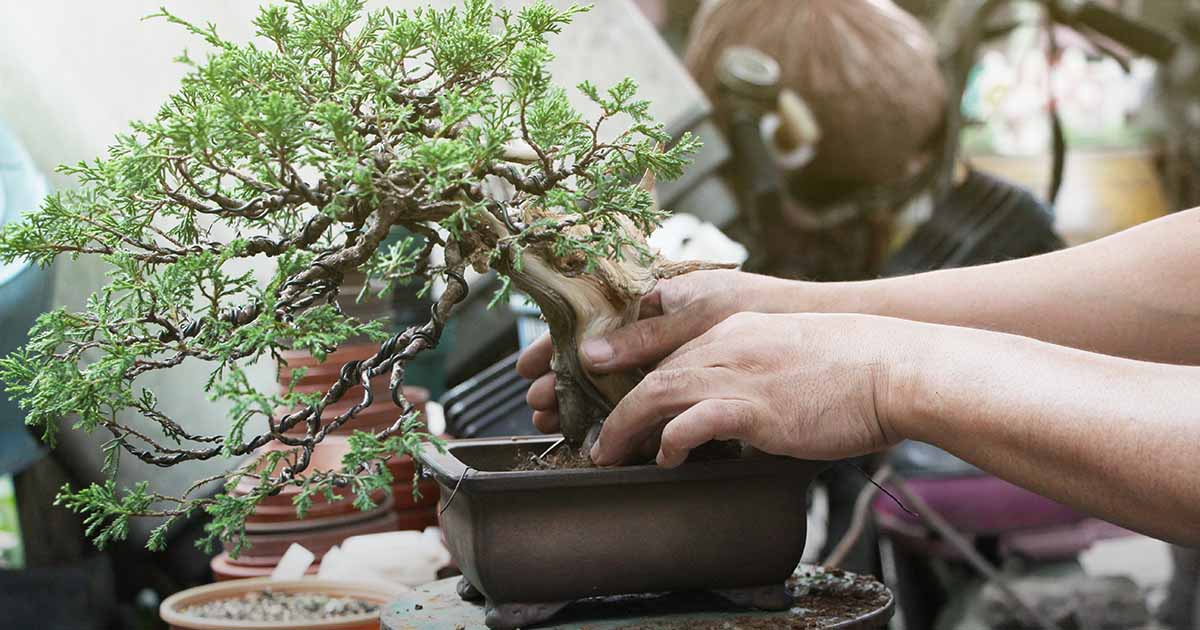In this article, we are going to investigate the different types of soil and substrates Utilized in bonsai cultivation, including natural and organic and inorganic alternatives.
We'll also uncover advised soil mixtures for numerous bonsai species, for example deciduous, coniferous, and indoor varieties. From akadama and pumice to moss and river sand, we will dive to the fascinating planet of bonsai soil and help you realize why It truly is a vital A part of cultivating these exquisite trees.

Bonsai soil
What is bonsai soil?
Bonsai soil is a specialized type of soil that is specifically formulated for growing and maintaining bonsai trees. Unlike regular garden soil, bonsai soil is well-draining and provides the necessary nutrients and moisture balance for the tree's root system. The composition of bonsai soil is carefully designed to meet the unique needs of bonsai trees, ensuring their health and longevity.
The importance of bonsai soil
The choice of soil plays a crucial role in the success of your bonsai tree. The right soil provides optimal drainage, allowing excess water to flow freely and preventing root rot. It also promotes a healthy and well-developed root system, which is essential for the overall health and growth of the tree. Bonsai soil retains moisture while allowing air to reach the roots, striking the perfect balance for the tree's needs. Choosing the right bonsai soil is essential for maintaining a healthy and thriving bonsai tree.
Bonsai substrates
What are bonsai substrates?
Bonsai substrates refer to the different materials that can be used to create the ideal soil composition for bonsai trees. These substrates are carefully chosen to meet the specific needs of different species of bonsai trees and to ensure proper water drainage and nutrient availability.
Different types of bonsai substrates
There are various types of bonsai substrates available, each with its own unique characteristics and benefits. Some common bonsai substrates include:
- Organic materials: These include ingredients such as bark, peat moss, and coconut coir. Organic substrates help retain moisture and provide essential nutrients to the bonsai tree.
- Inorganic resources: These include elements like pumice, lava rock, and akadama. Inorganic substrates present superb drainage, guaranteeing that excessive drinking water will not accumulate around the roots on the bonsai tree.
- Soil amendments: These are typically substances which can be extra to the soil mixture to boost its properties. Examples of soil amendments consist of perlite, vermiculite, and sand. They Enhance the soil's aeration, drinking water-holding ability, and nutrient availability.
By comprehending the differing types of bonsai substrates as well as their Houses, you are able to pick the most fitted a single in your bonsai tree's demands.
Natural and organic or Inorganic Soils
Natural and organic soils for bonsai
Natural soils for bonsai are made up of purely natural products which include bark, peat moss, coconut coir, and compost. These supplies supply a loaded source of nutrients for the bonsai tree and encourage wholesome root growth. Natural soils even have excellent drinking water retention Homes, making certain which the tree receives suitable dampness among watering sessions. However, it's important to note that natural and organic soils might stop working after some time and develop into compacted, leading to weak drainage and probable root issues.
Inorganic soils for bonsai
Inorganic soils for bonsai encompass supplies like pumice, lava rock, akadama, and soil amendments like perlite or vermiculite. These components have outstanding drainage Houses, avoiding waterlogged soil and advertising aeration within the roots. Inorganic soils are desired by quite a few bonsai fanatics due to their longevity and ability to supply a stable surroundings to the bonsai tree's root method. On the other hand, They might have to have a lot more Recurrent watering and extra fertilization, as they do not keep just as much dampness or nutrients as natural and organic soils.
Positives and negatives of making use of organic and inorganic soils for bonsai
Deciding on concerning organic and inorganic soils for your bonsai tree will depend on different aspects, such as the distinct species of tree, your climate, and personal Tastes. Here's the advantages and disadvantages of each:
Natural and organic soils:
- Execs: Provide nutrients, very good water retention, promote nutritious root development.
- Disadvantages: Could stop working eventually, probable for lousy drainage if not thoroughly maintained.
Inorganic soils:
- Pros: Excellent drainage, long-Long lasting, secure atmosphere for roots.
- Downsides: A lot less h2o retention, might need more frequent watering and fertilization.
By contemplating the positives and negatives of equally organic and natural and inorganic soils, you may make an informed conclusion determined by the precise requirements of your respective bonsai tree.
Soil factors
Important components of bonsai soil
Bonsai soil is typically made up of three most important parts: grit, natural make a difference, and clay. These parts operate together to create The best soil framework for that bonsai tree's root system.
- Grit: Grit, for instance sand or perlite, presents drainage and aeration during the soil. It can help avoid waterlogging and enables air to reach the roots.
- Organic make a difference: Natural and organic issue, such as compost or bark, supplies nutrients into the bonsai tree. Additionally, it assists retain moisture and Increase the soil's Total composition.
- Clay: Clay particles present some drinking water retention features and aid bind the soil collectively. Nonetheless, a lot of clay may result in weak drainage and compaction.
Part of each and every soil component
Just about every soil part plays a significant role in making a perfectly-balanced and healthier setting to the bonsai tree's roots.
- Grit: Grit gives the required drainage and aeration from the soil. It prevents the roots from sitting in stagnant h2o, cutting down the chance of root rot and advertising All round root overall health.
- Natural make a difference: Organic issue offers vital nutrients for the bonsai tree. It aids in moisture retention and contributes to the general structure from the soil.
- Clay: Clay particles enable bind the soil jointly and supply some h2o retention potential. On the other hand, it's important to stability the level of clay to stop difficulties like lousy drainage and compaction.
By knowledge the roles of every soil component, you may develop a balanced bonsai soil blend that fulfills the specific demands of your tree.

Recommended Bonsai soil mixtures
Common bonsai soil mixtures
There are several common bonsai soil mixtures that have been proven effective for various types of bonsai trees. These mixtures typically consist of a combination of inorganic substrates, organic matter, and soil amendments.
Some of the commonly used bonsai soil mixtures include:
- Akadama, pumice, and lava rock: This mixture is popular among bonsai enthusiasts for its excellent drainage and water retention properties.
- Akadama, lava rock, and organic subject: This combination brings together the benefits of inorganic substrates with the nutrient-abundant Qualities of organic issue.
- Pumice, perlite, and bark: This mixture presents very good drainage and aeration though retaining some moisture and providing nutrients.
These are just a couple examples of bonsai soil mixtures, and The best mixture will rely upon the particular needs of your bonsai tree plus your local climate.
Aspects to consider when deciding on a bonsai soil combination
When picking a bonsai soil combination, it is vital to think about the following components:
- Species of bonsai tree: Distinct species have diverse moisture and nutrient demands. Investigate the precise wants of your tree to choose a soil combination that satisfies its specifications.
- Weather: The local climate you live in can impact the humidity retention Houses in the soil. Take into account the typical humidity and temperature in your area when choosing a soil combination.
- Watering habits: Your individual watering behavior and regime ought to align Using the soil mixture you choose. Some mixtures have to have more frequent watering, while some retain moisture for extended periods.
- Finances: Some soil parts might be costlier than Many others. Take into consideration your price range when picking out a soil mixture.
By taking these elements into consideration, you could go with a bonsai soil combination that provides the top rising situations to your tree.
Deciduous Bonsai soil
Most effective soil composition for deciduous bonsai
Deciduous bonsai trees, for example maple or birch, have distinct soil demands to assistance their development and health. The best soil composition for deciduous bonsai ordinarily features a mix of organic make a difference, inorganic substrates, and soil amendments.
A advised soil composition for deciduous bonsai may perhaps include:
- Akadama: Presents good water retention although enabling for drainage. It also releases nutrients slowly after some time.
- Pumice: Encourages aeration and drainage from the soil, blocking waterlogging.
- Bark or peat moss: Provides organic and natural subject to your soil, furnishing nutrients and humidity retention.
This soil composition makes sure that the roots of deciduous bonsai trees obtain the best stability of dampness, nutrients, and oxygen for exceptional advancement.

Coniferous and Pine soil
Ideal soil mixture for coniferous and pine bonsai
Coniferous and pine bonsai trees have specific soil requirements due to their water retention needs and preference for acidic soil. An ideal soil mixture for coniferous and pine bonsai should provide good drainage while retaining moisture and maintaining the desired pH level.
A recommended soil mixture for coniferous and pine bonsai may include:
- Akadama: Provides excellent water retention while allowing for sufficient drainage. It releases nutrients slowly over time.
- Pumice: Promotes aeration and drainage inside the soil, blocking waterlogged roots.
- Peat moss: Adds organic make any difference and acidity to your soil, making an ideal pH stage for coniferous and pine trees.
This soil combination ensures that the roots of coniferous and pine bonsai website trees acquire the correct harmony of moisture, nutrients, and acidity for their particular demands.
Akadama
What's akadama?
Akadama is often a kind of clay soil that is definitely greatly Utilized in bonsai cultivation. It really is recognized for its great water retention Homes, which be certain a steady offer of moisture towards the bonsai tree's roots. Akadama is likewise prized for its ability to release nutrients slowly over click here time, supplying a reliable supply of nourishment with the tree.
Benefits of making use of akadama in bonsai soil
Applying akadama in bonsai soil offers numerous Advantages:
- Drinking water retention: Akadama has Remarkable water retention Attributes, allowing it to hold moisture with no getting waterlogged. This ensures that the bonsai tree's roots receive a regular supply of h2o, promoting balanced advancement.
- Nutrient release: Akadama slowly releases nutrients in the soil over time, furnishing a regular supply of nourishment for your bonsai tree. This reduces the need for Recurrent fertilization and aids retain a well balanced nutrient profile.
- Aeration: Despite its drinking water retention capabilities, akadama also presents ample aeration for the bonsai tree's roots. It enables air to get to the root program, stopping concerns including root rot due to insufficient oxygen.
By incorporating akadama in the bonsai soil, you'll be able to develop an exceptional developing atmosphere for your tree, making sure its health and fitness and vitality.

Lava rock
How lava rock benefits bonsai soil
Lava rock is a popular component in bonsai soil mixtures due to its excellent drainage and aeration properties. It is typically used in conjunction with other substrates to create the ideal soil composition for bonsai trees.
The benefits of lava rock in bonsai soil include:
- Drainage: Lava rock provides excellent drainage, preventing waterlogging and ensuring that excess water flows freely through the soil. This helps prevent root rot and provides a healthy environment for the roots to thrive.
- Aeration: The porous character of lava rock permits air to circulate in the soil, delivering oxygen into the bonsai tree's root process. Correct aeration is critical for healthful root enhancement and overall tree progress.
- Longevity: Lava rock is usually a durable materials that does not break down conveniently. This ensures that the soil framework remains steady with time, reducing the necessity for Regular soil replacements.
Lava rock is available in various sizes and styles, allowing for for personalisation dependant on the particular needs of your bonsai tree and soil needs.
Differing types of lava rock
You can find differing types of lava rock which might be used in bonsai soil mixtures, which include:
- Black lava rock: Black lava rock is actually a generally utilised materials in bonsai soil mixtures. It offers outstanding drainage Homes and adds an aesthetic factor to the overall presentation on the bonsai tree.
- Purple lava rock: Purple lava rock is an additional popular selection in bonsai soil mixtures. It provides comparable drainage and aeration Advantages as black lava rock but has a definite reddish colour that adds Visible fascination to your container.
Both black and pink lava rocks are greatly out there and will be conveniently included into your bonsai soil combination.
Potting
Vital methods for productive bonsai potting
Potting can be a critical procedure in bonsai cultivation, since it instantly impacts the wellbeing and improvement of the tree's roots. Here are several vital techniques for thriving bonsai potting:
- Choose the appropriate pot sizing: Pick a bonsai pot that permits for root development while nevertheless supplying a comfortable match. Stay away from pots which can be also large, because they may result in excessive soil dampness and lousy root development.
- Use bonsai wire: Protected the tree during the pot applying bonsai wire to be certain balance. This prevents the tree from shifting or getting to be uprooted through watering or powerful winds.
- Trim and spread the roots: Before potting the bonsai tree, meticulously trim and unfold out the roots. This encourages outward expansion and stops root tangling or root-bound problems.
- Include mesh screens: Place mesh screens above the drainage holes at The underside from the pot to prevent soil erosion and ensure right drainage.
- Use new bonsai soil: When potting, always use contemporary bonsai soil to deliver the mandatory nutrients and ideal escalating problems for the roots.
By pursuing these essential guidelines, you may guarantee a successful potting process and encourage the general well being and growth within your bonsai tree.
The part of bonsai pots in soil humidity Handle
Bonsai pots Enjoy a vital role in soil humidity Handle, right impacting the health and advancement with the tree. Bonsai pots are typically shallow and possess drainage holes, enabling excessive h2o to flee and protecting against the soil from becoming waterlogged.
The design of bonsai pots encourages evaporation and air circulation, which assists regulate soil moisture ranges. The shallow depth and large opening of the pot expose extra area spot of your soil towards the air, aiding in dampness evaporation. This stops the roots from sitting down in excessively soaked soil, decreasing the risk of root rot and other water-similar issues.
Also, the drainage holes in bonsai pots permit any excessive drinking water to escape, blocking waterlogged soil and selling aeration around the roots. Right aeration is important for the well being and growth of the foundation system, guaranteeing the bonsai tree gets the mandatory oxygen for growth.
Through the use of bonsai pots suitable for efficient dampness Manage, you are able to build a positive natural environment for the bonsai tree's roots and advertise its Over-all health and vitality.
In conclusion, picking out the suitable bonsai soil is significant for your results and wellbeing of one's bonsai tree. Understanding the differing types of bonsai substrates, the job of natural and inorganic soils, The main element factors of bonsai soil, and the different advised soil mixtures will assist you to provide the exceptional escalating problems in your bonsai tree. No matter if you have a deciduous or coniferous bonsai, incorporating materials like akadama and lava rock can increase the soil's drainage and nutrient availability. Additionally, listening to potting tactics and applying bonsai pots suitable for humidity Management will further support the flourishing progress of the bonsai tree. With appropriate comprehending and implementation of bonsai soil tactics, it is possible to enjoy the magnificence and artistry of bonsai cultivation For some time to return.
